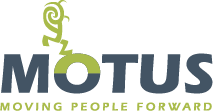How do IT professionals combine their love of technology, data, learning, and solving technical challenges outside of their 9-5 jobs? By starting a side project that allows you to work on a project in your own time and at your own pace. These projects can provide an opportunity to work on something you’re passionate about (and possibly not available at your job) while developing various skills to add to your portfolio. Many IT professionals have side gigs in order to experiment in their own time, expand their wheelhouse, and not to mention create a safety net if the day job suddenly went away.
Side projects can be fun and great way to earn a little extra money, but self-promotion and marketing are crucial components to the success of any project. Here are my tips:
Word of mouth – Sometimes the hardest part of promoting your project is actually talking about it. Get an elevator pitch and get comfortable bringing up what you’re working on with people so it is the forefront of every networking conversation. In talking about your project, conversations could lead to unexpected findings, progress, and/or an introduction to another interested party. Pretty soon it will feel natural to talk about all the cool things you’re working on.
Write about it – In order to start building momentum online, create a blog detailing your project progress and process. Blog posts and emails are easy for everyone to share Also, if you’re more of an introvert, writing out all the progress instead of talking about it might feel more natural. This gives you an opportunity as well to craft your messaging in writing before talking about your project to others. It’s also a cool resource to go back and read to see the evolution from start to finish.
Build raving fans – While you’re talking (and/or writing) about how great your project is, hopefully, you’ll also build advocates. Allow people to grow with the project and update them on your progress along the way. That could mean allowing people to beta test your product or sending out a monthly or quarterly email. When more people know about the project, you’ll have a much farther reach and people who can endorse and encourage your progress. Garnering advocates along the way is especially helpful when you really need help talking about your project. If you can’t talk about it, find someone who can!
Collaborate with fellow developers – Reach out to fellow developers to discuss their projects and see if there is any opportunity to collaborate. Not only is this a great way learn different technologies your peers are working on, it’s a way to build mutually beneficial relationships in your industry.
When it comes to presenting your side projects on a resume or an interview, there are a few things to keep in mind. What information do you include? If you have more than one project, which one do you include?
Here’s a good place to start:
- Create another header on the resume separate from “Work Experience.” You could call it “Projects” or “Additional Experience.”
- If you’ve worked on more than one project, list them in order of relevance to the position you’re applying to.
- When deciding what information to provide about your projects, again you’ll want to tailor it to the position you’re interested in. It’s always a good idea to list the technologies and languages you’re using. Like any other work experience, you’ll want to include applicable skills and technologies used in each project.
It can be hard to naturally give others our highlights when it really matters – like in an interview or even networking. Regardless of your job or industry, it’s often much easier to sing the praises of our peers while neglecting to acknowledge our own achievements. But remember, you’re doing yourself a disservice if you bypass the opportunity to display all of your talents, especially the ones you’re most passionate about.







